Pictures › Wildlife › People & Places › Country Know-how › Food
THE BIG PICTURE
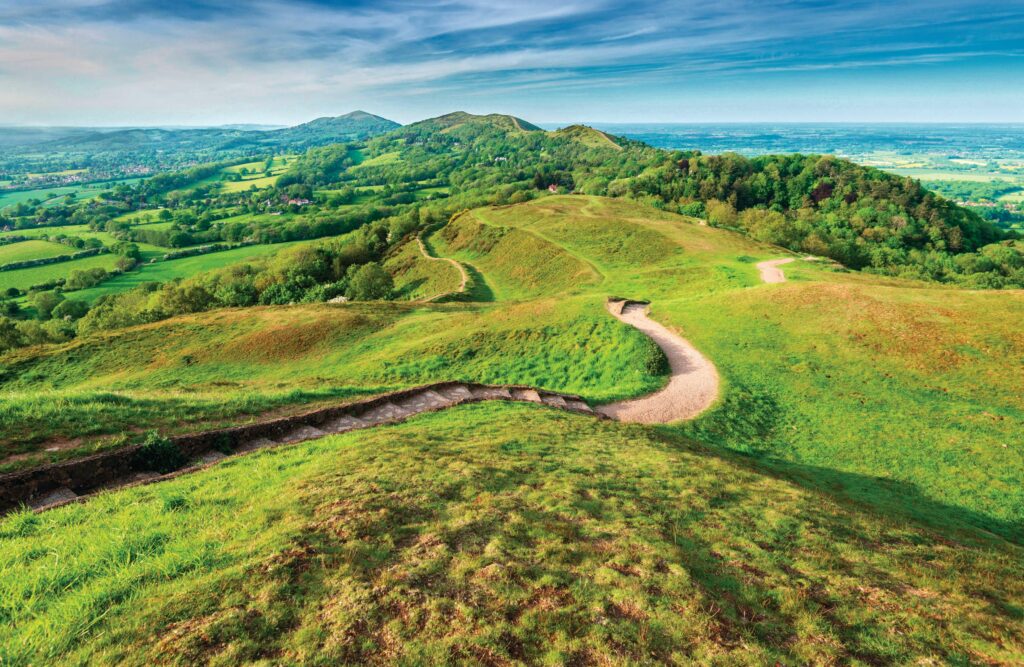
Dividing the counties of Worcestershire and Herefordshire, the Malvern Hills ridge path offers gorgeous panoramic views and a sense of loftiness usually associated with higher peaks. From 27 May, Malvern Walking Festival celebrates this AONB with nine days of themed and guided walks, from stopping in at a brewery on a hop farm or finding the most majestic trees of the Malverns to exploring routes off the beaten track (malvernwalking.uk). See page 10 for more walking festivals to try this spring.
THE MERCURIAL CUCKOO
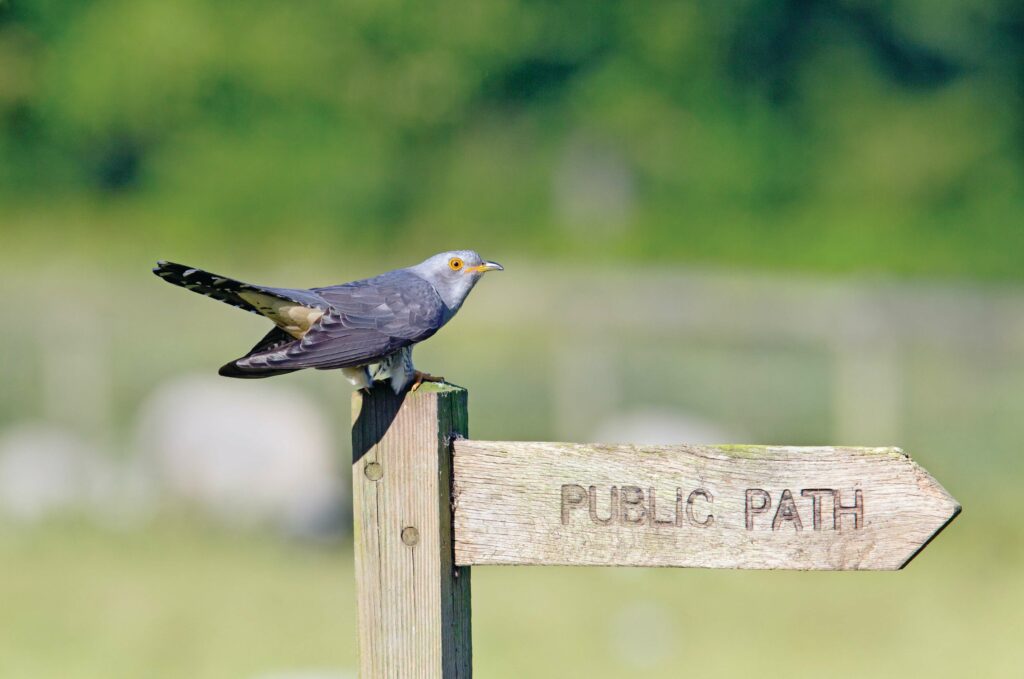
“The cuckoo comes in April, sings his song in May, changes his tune in the month of June, and then he flies away.”
Now on the red list of endangered species in the UK, cuckoo numbers have dropped alarmingly in recent decades, but if you’re walking on Dartmoor, in the New Forest, the Brecon Beacons or the western Highlands of Scotland, you should see one. A notorious brood parasite, the cuckoo lays a single egg in the nest of another bird, which then raises the chick, thinking it is one of its own. Preferred foster parents are dunnocks, meadow pipits and reed warblers. Because cuckoos take no part in rearing their young, their breeding season here is very short, arriving in April and returning to Africa by as early as late June.
JOIN IN
Walking Festivals
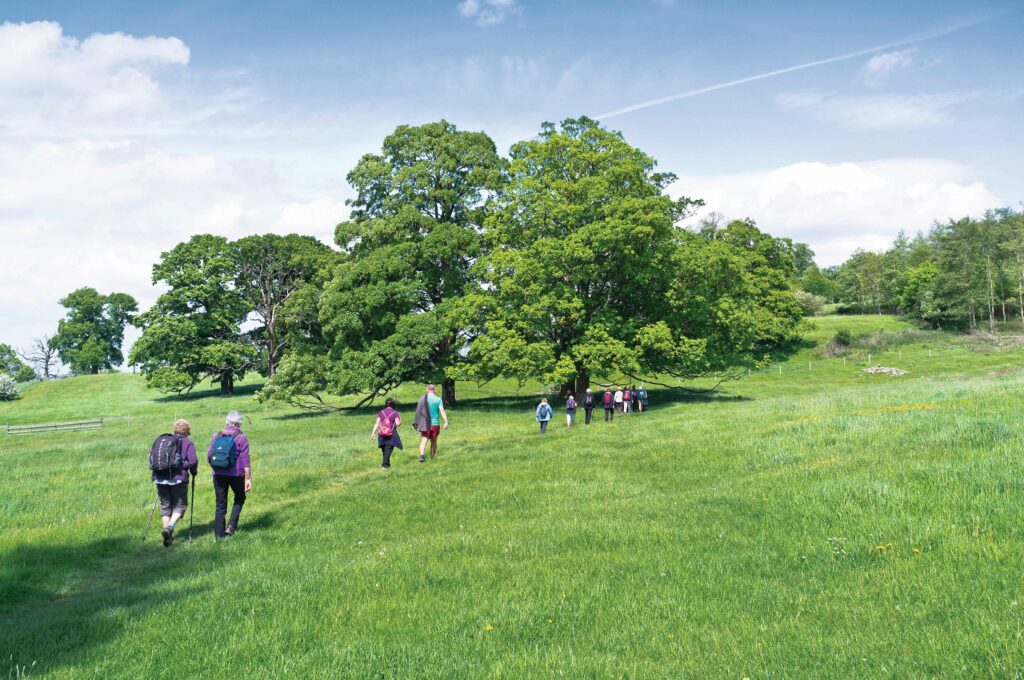
Is there a more uplifting time to be out exploring the British countryside than that sweet spot between spring and summer, when the hills, woodlands and riverbanks are at their lushest? It’s a period to celebrate, and a host of walking festivals do a fine job of this. Here are a few to look out for…
May: National Walking Month
19–21 May Winchcombe Walking Festival
This year, the Cotswold festival is offering 21 walks, each led by knowledgeable leaders. Learn about local history and farming, discover Winchcombe’s lost pubs, hunt for orchids, or take on the popular – if a little gruelling – 21-mile challenge. There’s even the opportunity to try your foot at Nordic Walking. winchcombewelcomeswalkers.com
20 May – 4 June Guernsey
Join expert guides on coastal hikes, quiet lanes or in the beautiful island capital, learn about the German occupation of Sark in the Second World War, and discover Herm’s flora and fauna. visitguernsey.com/see-and-do/eventsfestivals/spring-walking-festival
12–18 May Newton Stewart
Enjoy the wonderfully unspoilt landscape of Galloway in the week-long Walkfest, which offers 30 routes, transport, guides and evening social events. walkfestnewtonstewart.com
FIVE MORE WALKING FESTIVALS
5–9 May Kendal
kendalwalkingfestival.co.uk
13–21 May Isle of Wight
isleofwightwalkingfestival.co.uk
13–25 May National Forest
nationalforest.org/visit/national-forest-walking-festival
13–28 May Suffolk
suffolkwalkingfestival.co.uk
19–21 May Prestatyn and Clwydian Range
prestatynwalkingfestival.co.uk
MUST READ
SPRINGWATCH: GREAT BRITISH WALKS
100 wildlife walks through our beautiful countryside
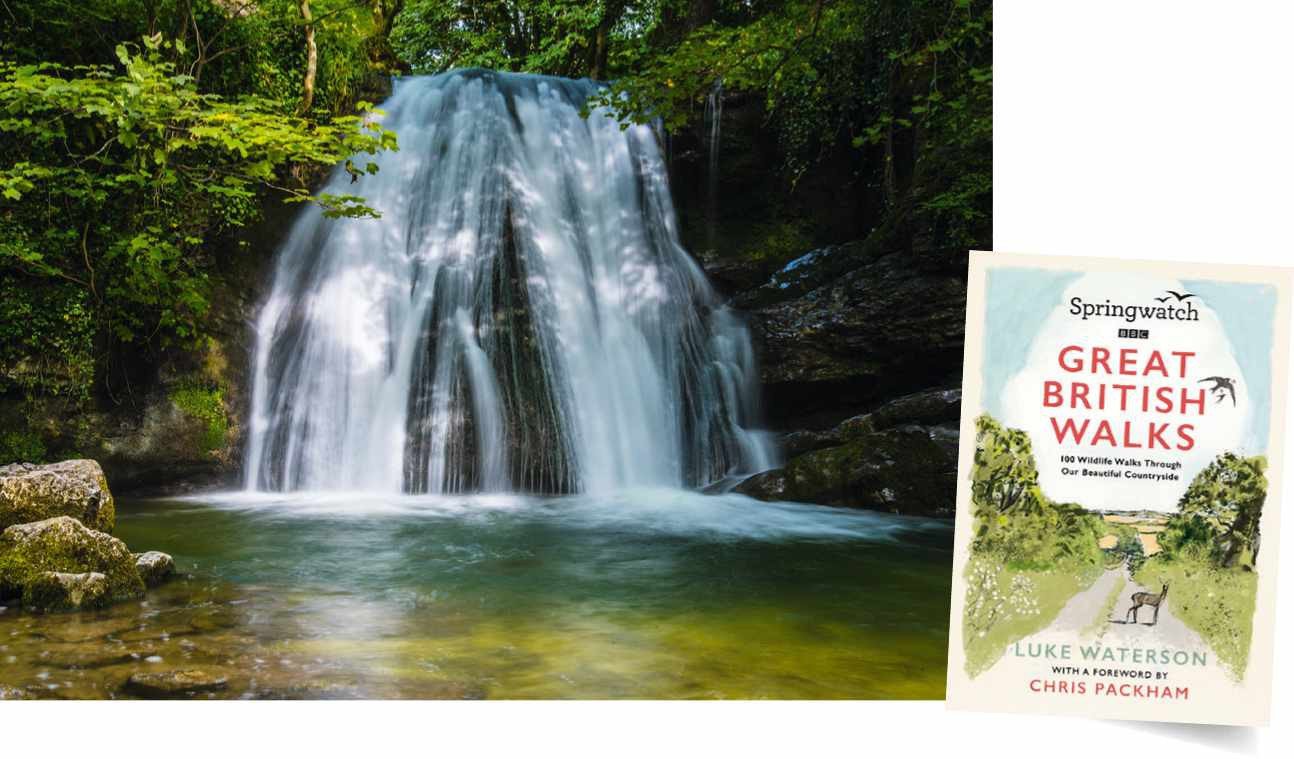
This book of hikes from BBC Springwatch takes you into some of Britain’s most special wildlife habitats. There’s a good range of short circular and full-day treks, with practical information – such as start and end points, distances and accessibility – in the order you want it. With basic route maps and wildlife illustrations, it has some lovely colour throughout: “At the end of this glorious stretch of ancient woodland, eventually tapering almost to a gorge, is Janet’s Foss waterfall. Janet, queen of the faeries according to legend, lived behind the falls at this enchanting spot.” Useful and inspiring. Reviewed by Tanya Jackson
This month on the Plodcast
New season of Plodcasts for you to enjoy – for free
Our new season of the award-winning Plodcast is all about making the most of spring. Join the team and special guests including Mike Dilger, Charlotte Church and Sabrina Pace-Humphreys as they head out on quests to find wildlife, explore historic sites and capture stunning birdsong. It’s the perfect escape into the countryside whenever you need it. Find the Plodcast on Apple, Spotify and all good podcast providers.
FEEL-GOOD TRIAL BARS
Fuel your next walking adventure with a batch of these delicious low-sugar energy-giving snack bars, crammed with nutritious seeds, nuts and dried fruit. Adapted from a BBC Good Food recipe.
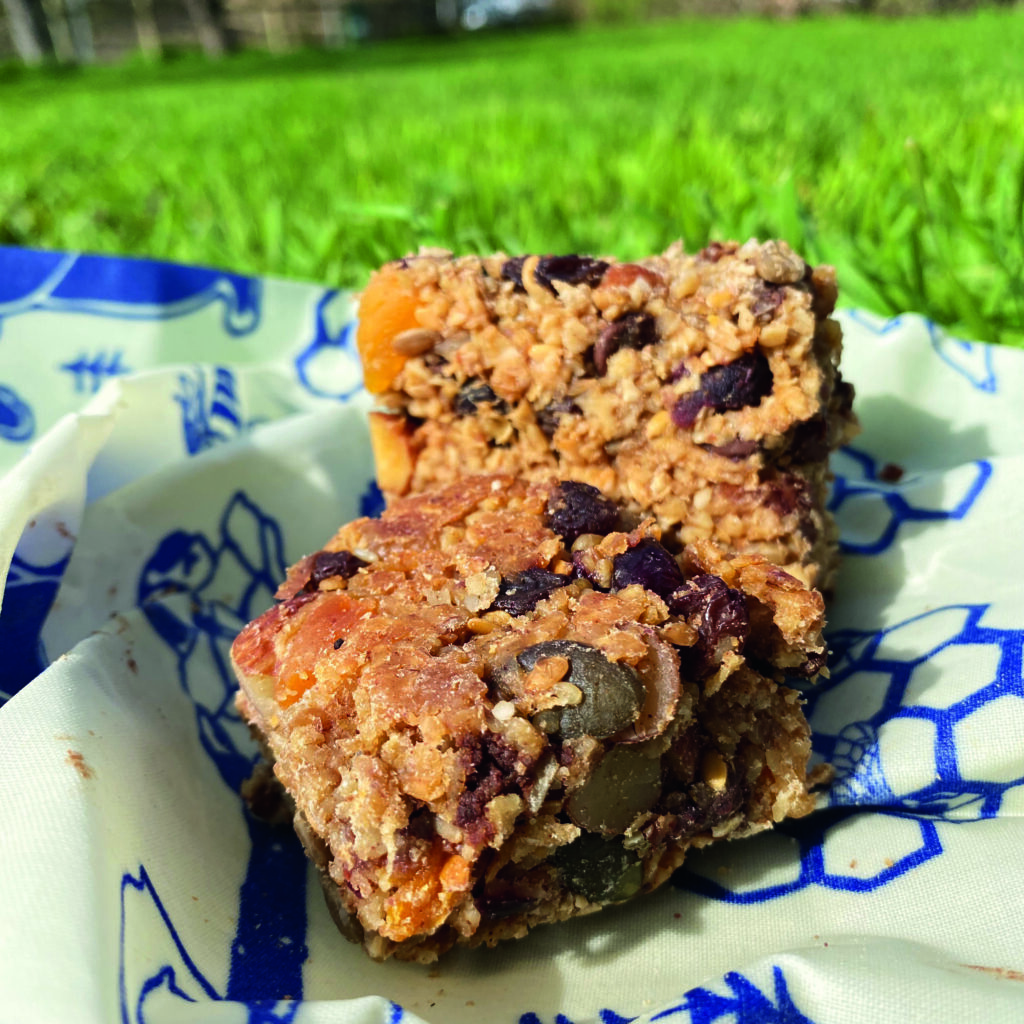
MAKES 12 BARS
• 50g butter, plus a little extra for greasing
• 2 tbsp smooth peanut butter
• 3 tbsp golden syrup or honey
• 1 ripe banana, mashed
• 1 apple, grated
• 250g rolled oats
• 1 tsp cinnamon
• 85g dried apricots, chopped
• 50g raisins
• 50g cranberries
• 85g mixed seeds (we used sunflower, pumpkin and sesame)
• 50g almonds, roughly chopped
• 50g dark chocolate chips
1. Heat your oven to 160°C/140°C fan/ gas 3. Grease then line a 20cm square tin with baking parchment. Heat the butter, peanut butter and golden syrup or honey together in a small pan until melted. Add the mashed banana, grated apple and 100ml hot water, and mix to combine.
2. Tip the oats, cinnamon, dried fruit, seeds and almonds into a large bowl and mix together. Pour in the combined banana and apple and stir until everything is coated by the wet mixture. Add the chocolate chips and stir again until combined.
3. Tip into the tin and smooth the mixture out to level the surface. Bake for 55 mins until golden. Leave to cool in the tin, then cut into 12 pieces to take with you on the trail, or store in an airtight container in the fridge. They will keep for up to three days and taste even better the day after they’re made.
ACCESSIBLE BRITAIN
Five great resources for wheelchair users
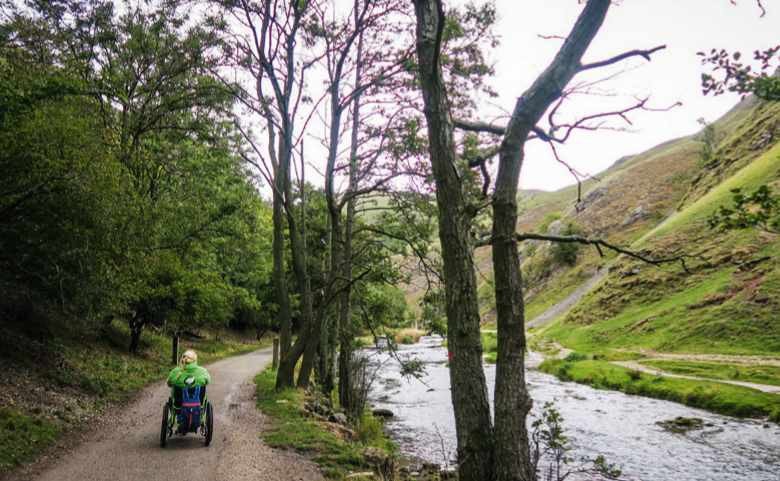
We all have the right to experience the beauty of the British countryside, from its high hilltops to its sinuous shores. For wheelchair users and people with limited mobility, access to these special places can, however, be difficult, with uneven paths, stiles and a lack of facilities making exploring challenging. Online resources detailing easy access routes and days out are, therefore, a valuable tool. Here are a few to check out:all true lovers.
Tourism for All tourismforall.co.uk
Visit England visitengland.com/access-all Countryfile.com countryfile.com/go-outdoors/walks/ wheelchair-friendly-trails
The Outdoor Guide theoutdoorguide.co.uk/walks/ wheelchair-friendly-walks
Get Outside (OS Maps) getoutside.ordnancesurvey.co. uk/guides/best-stile-free-walks-in-britain
LEARN A SKILL
HOW TO READ A COMPASS
Carrying a compass and knowing the basics of how to use it is a valuable skill when out walking in the countryside, even if you usually use a mobile device to navigate. Fi Darby, navigation specialist
Relate your compass to your map Once you know that north is at the top of your map you can work out the other directions. When you’ve done this, you can use your compass to help you face the way you want to go.
Use a compass to face in a particular direction Whether you’re in the middle of nowhere or at a path junction, your compass can help you travel in the right direction. You can choose any direction but it’s easiest to start with the main cardinal points.
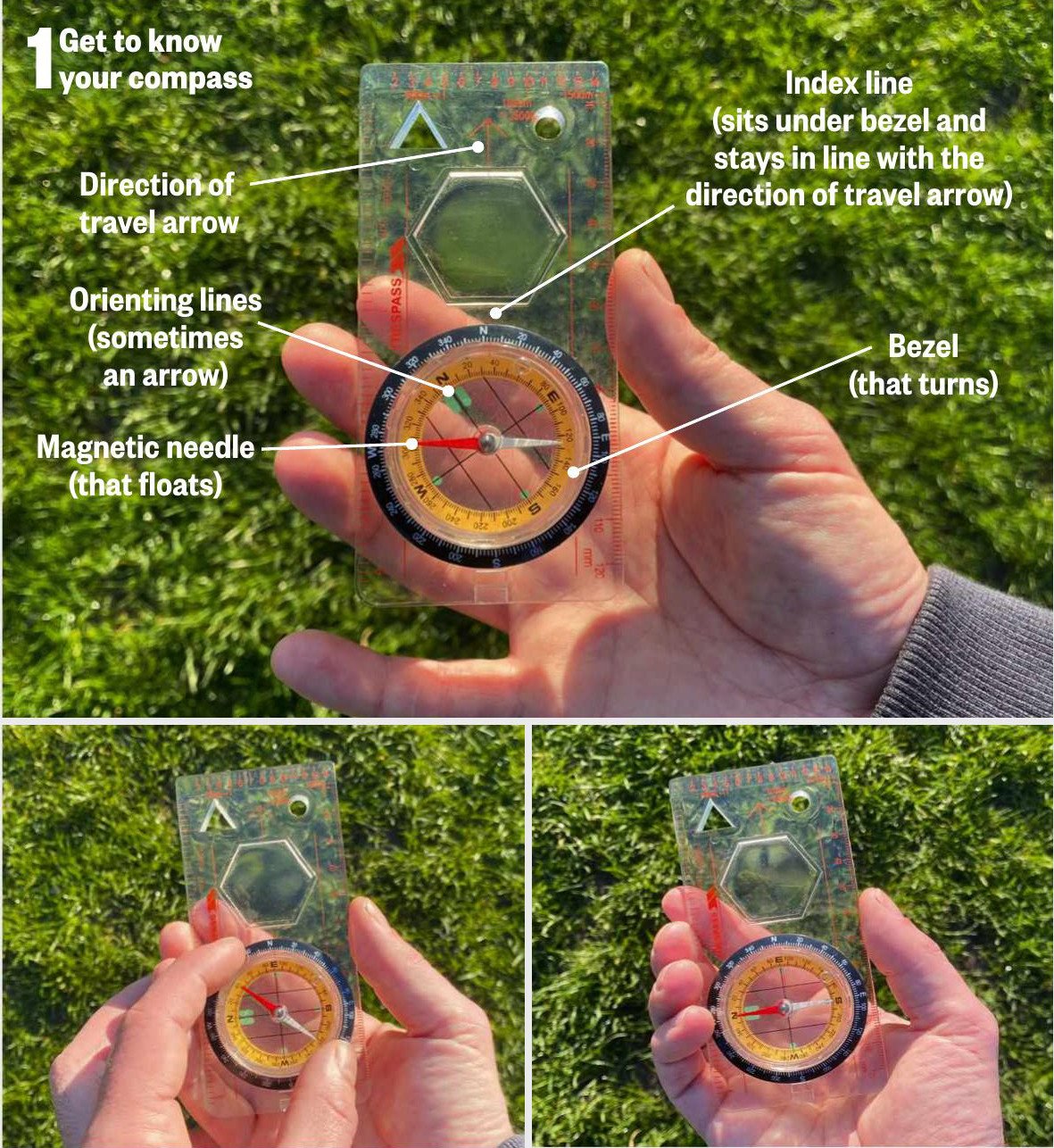
2 Turn the bezel of your compass so the direction you want to travel lines up with the index line. For this demonstration we’ve chosen E for east.
3 Holding the compass perpendicular to your body and flat in front of you, turn your body until the red end of the floating magnetic needle is inside the orienting lines (or arrow). You’re now facing east.
Walk the way you want to go Once you’re facing the right direction, you can start walking. If you keep the magnetic arrow inside the orienting lines as you go, you’ll be walking a straight line. But looking at the compass all the time isn’t practical. Instead, pick an obvious point ahead of you in the direction your compass is telling you to go. Walk to that point then line your compass up again and pick the next point to walk to.
Countryfile on TV
BBC ONE, SUNDAYS
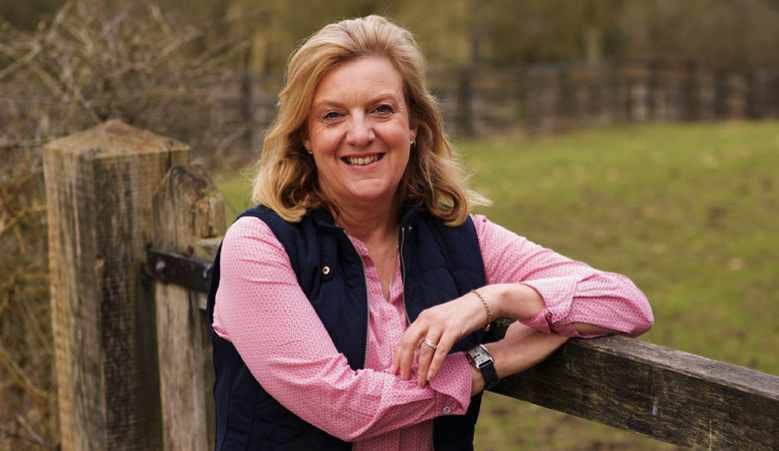
14 May Charlotte Smith and Adam Henson present an episode focusing on rural mental health awareness.
21 May Young shepherdess Sammi Kinghorn helps out on Katie Laidlaw’s family farm in Cumbria. Aged 16, Katie is farming mad, so how is she going to juggle GCSEs with her love of working outdoors?
28 May Matt Baker and Charlotte Smith are in Teesdale to catch up with 98-year-old botanist Margaret Bradshaw, who’s on a mission to save the region’s rare flora.
ID guide
SIX COMMON UMBELLIFERS
Delicate clusters of flowers are dotting our verges and field margins. Tiny petals are balanced on short stalks, neatly splayed as though arranged by a florist. They are Apiaceae or Umbelliferae, commonly known as umbellifers, comprising more than 3,800 species worldwide and one of the earliest identified plant families. Words by Kevin Parr | Illustrated by Lizzie Harper
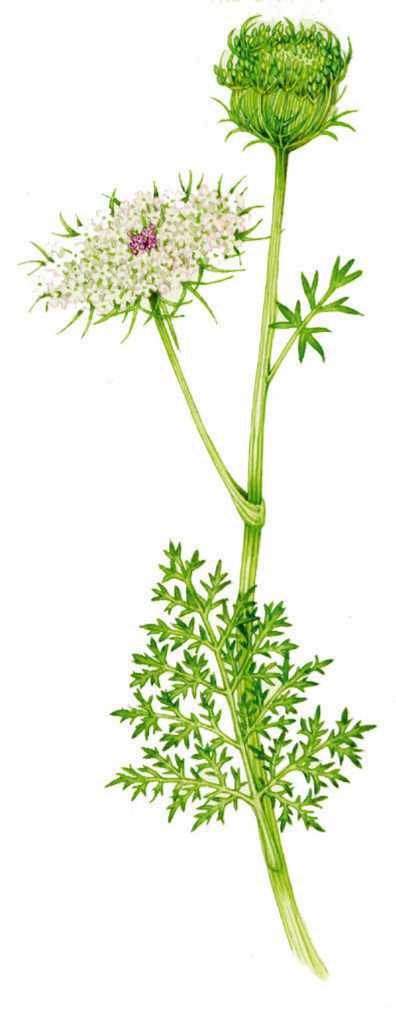
WILD CARROT
Daucus carota Rarely exceeding 60cm in height, wild carrot has three forked bracts (small, leaf-like structures) that form beneath the flowerhead; a tight cluster of crisp white flowers, often with a deep-red central flower. The leaves are slender but robust.
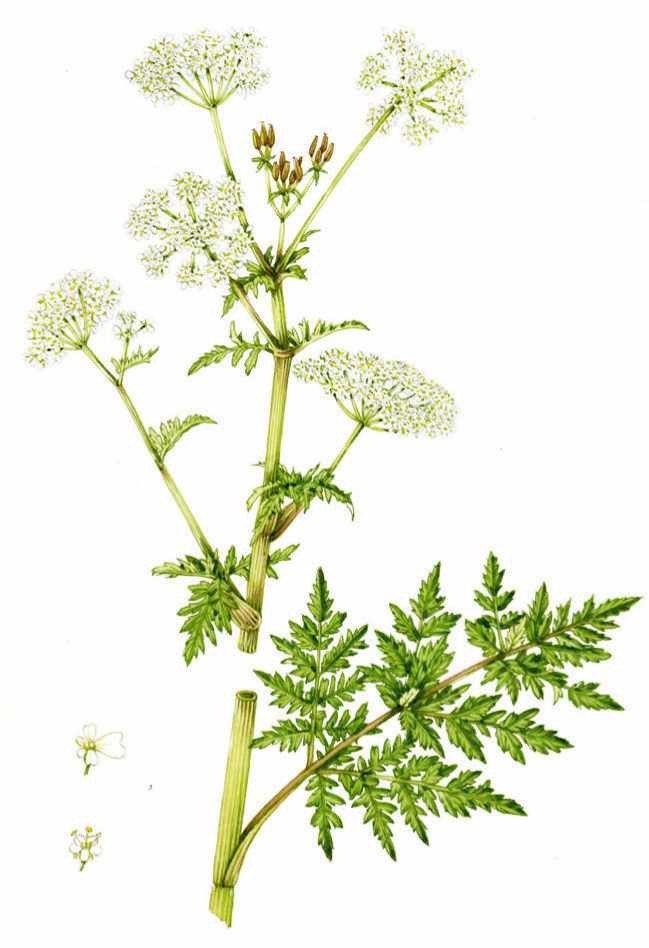
COW PARSLEY
Anthriscus sylvestris Come May, cow parsley seems to line every path. The flowers are small and delicate, with five creamy-white petals on short stalks, arranged in groups of up to 10 to form an umbel. The leaves are green and feathery, and the stalk is striated.
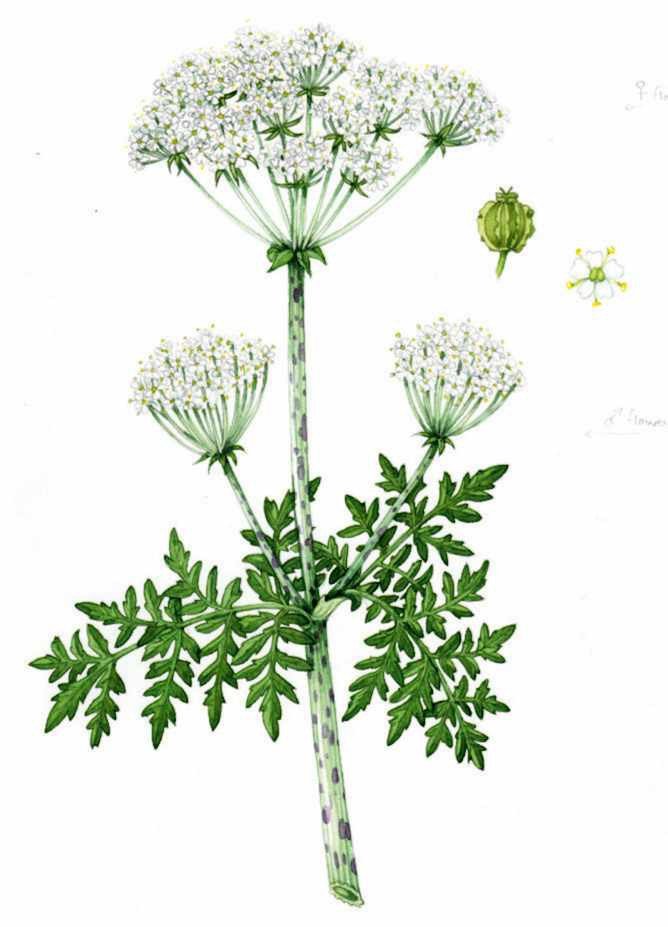
HEMLOCK
Conium maculatum Hemlock contains coniine, which, when ingested, can be fatal to humans. To identify it, look to the leaves, which have a slightly glossy sheen, while its stem has distinctive purple blotches. Hemlock has a foul ‘mousy’ odour. Look but don’t touch.
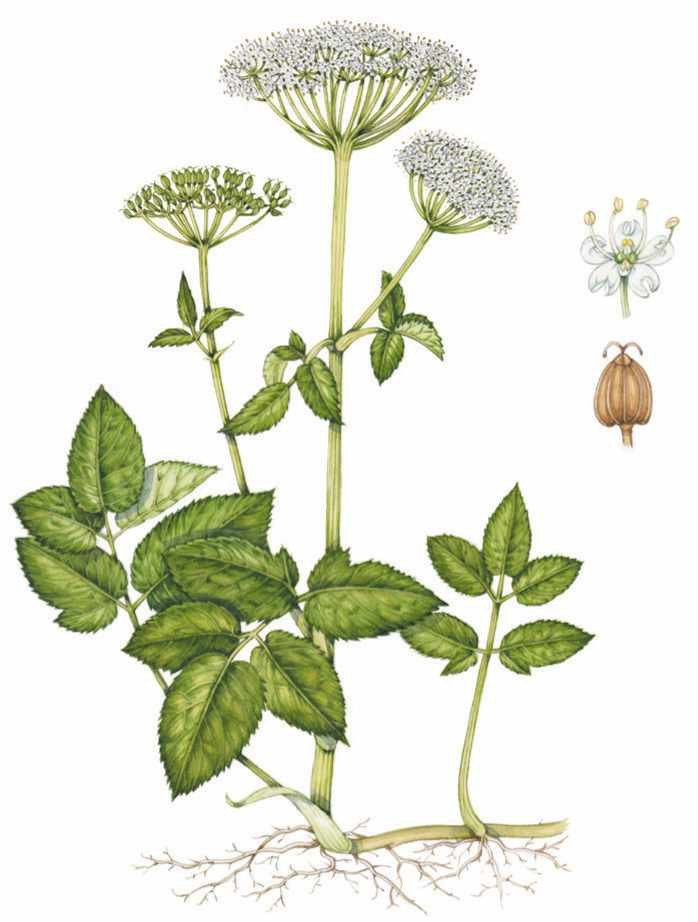
GROUND ELDER
Aegopodium podagraria Ground elder is so called due to the shape of its leaves, which are triangular, toothed and ternate (arranged in threes), and the delicate white flowers that combine to resemble the elder tree. Its rhizomes grow sideways through the soil..
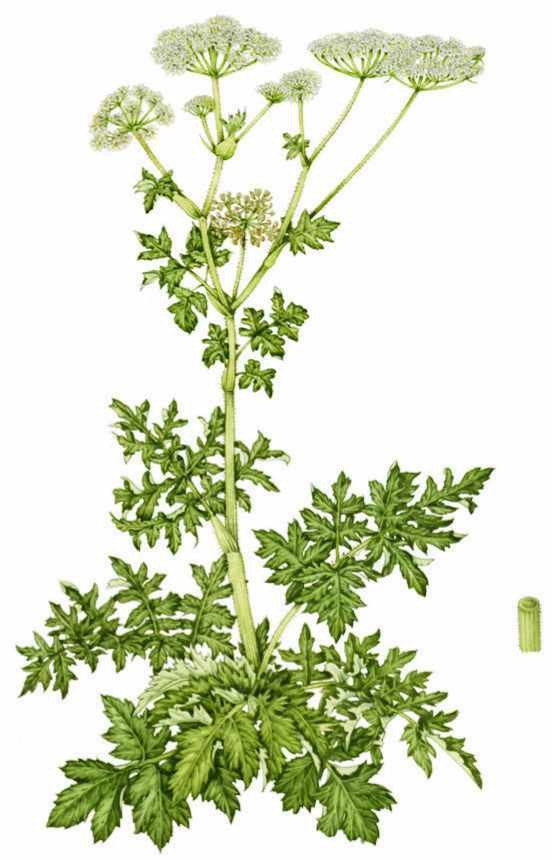
HOGWEED
Heracleum sphondylium Hogweed grows tall, as high as two metres, and the stem is thick and robust with coarse and conspicuous hairs. The umbels consist of as many as 45 rays, while the white flowers sometimes carry a slightly pinkish tinge.
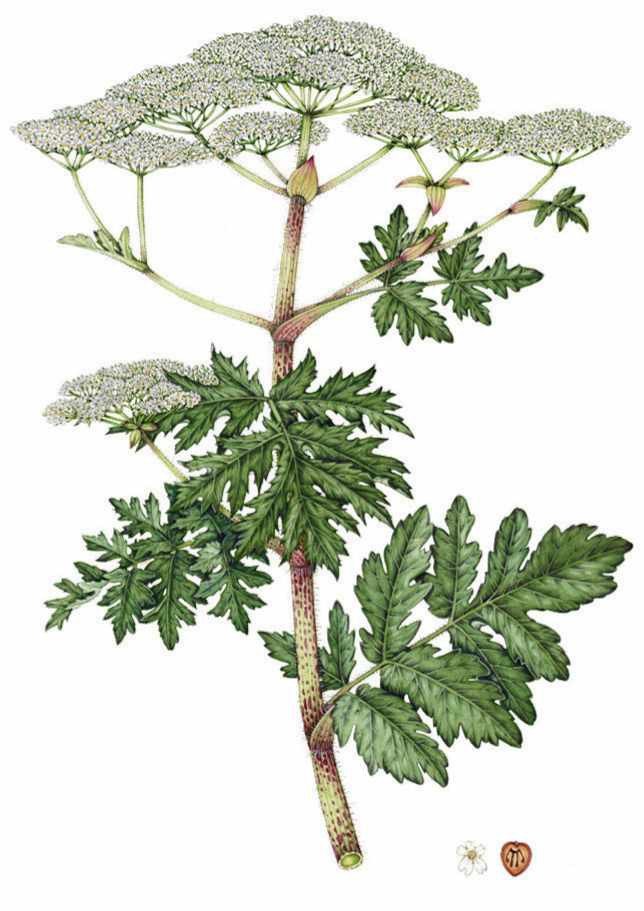
GIANT HOGWEED
Heracleum mantegazzianum This enormous plant can grow up to five metres tall, with vast umbels (up to 60cm). The stalk is ridged with purple splotches; the leaves deepgreen and lobed. Can blister skin if touched.